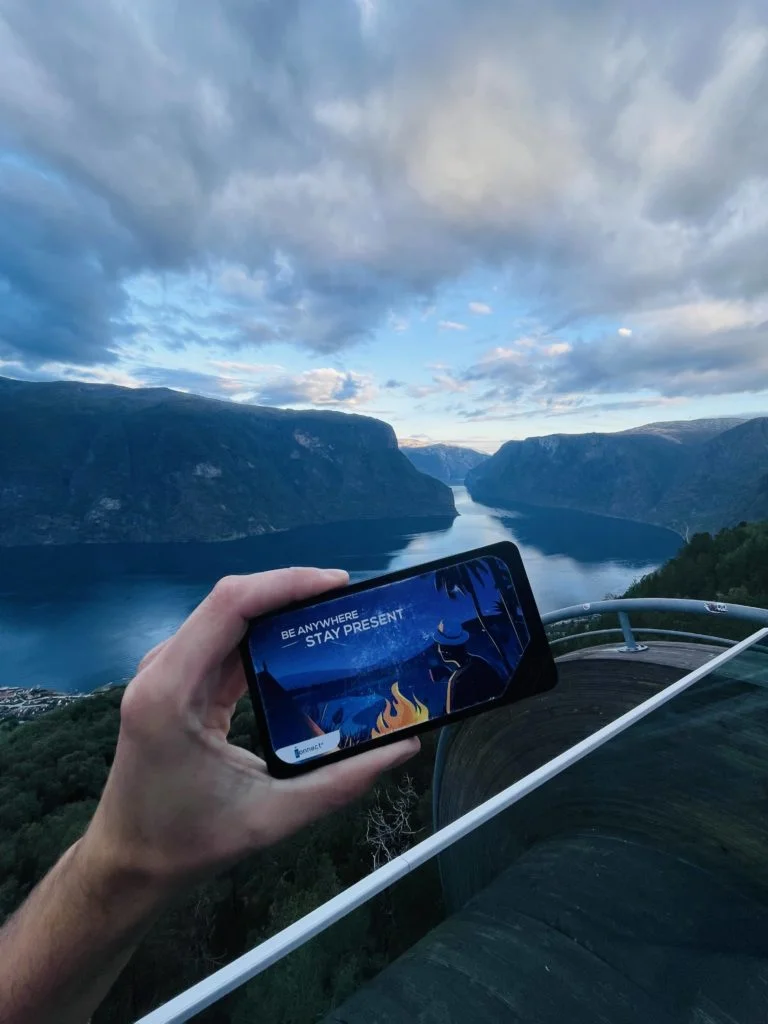The Importance of Setting Boundaries: Balancing Work and Personal Life

In today’s fast-paced world, finding a health balance between work and personal life or balancing work and personal life is more crucial than ever. As the lines blur between our professional and private lives, it’s essential to set clear boundaries to ensure we don’t burn out and lose touch with the things that truly matter. For digital nomads and remote workers, mastering this balance can be even more challenging but equally rewarding.
Key Takeaways
- Importance of setting boundaries for maintaining a work life balance
- Strategies for balancing work and personal life
- Benefits of a healthy work life and personal life balance
- Role of ConnectPls in maintaining connectivity and productivity
The Necessity of Boundaries

Why Boundaries Matter
Setting boundaries is essential for several reasons. First, it helps create a distinct separation between your professional and personal lives. Without clear boundaries, you may find yourself constantly thinking about work, even during your downtime, which can lead to stress and burnout. Furthermore, boundaries enable you to be more present in both aspects of your life, enhancing your performance at work and your relationships at home.
The Impact on Mental Health
A lack of boundaries can have severe repercussions on mental health. When work encroaches on personal time, it can lead to anxiety and depression. On the other hand, clear boundaries help ensure that you have time to relax and recharge, which is crucial for maintaining a healthy mind.
Strategies for Balancing Work and Personal Life

Establish a Routine
One of the most effective ways to achieve a health balance between work and personal life is by establishing a routine. Set specific working hours and stick to them. This not only helps you stay productive but also ensures you have dedicated time for personal activities.
Ensure your connectivity never falters with ConnectPls, providing reliable internet service wherever your work takes you.
Prioritize Tasks
Prioritizing your tasks can also play a significant role in balancing work life and personal life. Use tools like to-do lists or project management apps to organize your work. Focus on high-priority tasks first and allocate time slots for them. This way, you can avoid last-minute rushes and the stress that comes with them.
Create a Dedicated Workspace
Having a dedicated workspace helps create a physical boundary between your work and personal life. It signals your brain when it’s time to work and when it’s time to relax. This separation can enhance your productivity and help you switch off from work mode at the end of the day.
Take Regular Breaks
Taking regular breaks is essential for maintaining productivity and preventing burnout. Use techniques like the Pomodoro Technique, where you work for 25 minutes and then take a 5-minute break. Longer breaks can be scheduled after every few sessions. This method helps keep your mind fresh and focused.
Maintaining a Healthy Work Life and Personal Life Balance

Importance of Self-Care
Self-care is a critical component of a healthy work life balance. Make time for activities that you enjoy and that help you relax. This could be anything from reading a book, going for a walk, or spending time with loved ones. Prioritizing self-care can significantly improve your overall well-being.
Stay connected with your personal interests while maintaining productivity with ConnectPls, your reliable internet companion.
Communicate Your Boundaries
Communication is key when it comes to setting boundaries. Let your colleagues and supervisors know your working hours and when you are available for meetings or calls. Similarly, communicate with your family and friends about your work schedule so they understand when you need to focus on work.
Learn to Say No
It’s important to recognize that you can’t do everything. Learning to say no to extra tasks or commitments that don’t align with your priorities is crucial for maintaining a balance. This doesn’t mean you are being unhelpful; it means you are respecting your own time and energy.
The Role of Technology in Work Life Balance

Leveraging Technology
Technology can be both a boon and a bane when it comes to work life and personal life balance. On one hand, it enables remote work and flexibility. On the other hand, it can lead to overworking if boundaries are not set. Leveraging technology smartly can help maintain this balance.
Tools for Productivity
There are numerous tools available that can aid in balancing work and personal life. Calendar apps, project management tools, and communication platforms can help streamline your tasks and manage your time effectively.
Disconnect to Reconnect
While technology is essential, it’s equally important to disconnect from it regularly. Set aside time to unplug from digital devices and spend quality time with family and friends. This helps reduce screen fatigue and allows you to recharge mentally and physically.
ConnectPls ensures that you have reliable connectivity when you need it, and the freedom to disconnect when you don’t.
Benefits of a Balanced Life

Improved Mental Health
A balanced life significantly improves mental health. It reduces stress, anxiety, and the risk of burnout. When you are able to dedicate time to personal interests and relaxation, you are more likely to feel fulfilled and happy.
Enhanced Productivity
Contrary to popular belief, overworking does not lead to higher productivity. In fact, it can have the opposite effect. A balanced approach ensures that you are more focused and productive during work hours, as you have had adequate time to rest and recharge.
Better Relationships
Balancing work life and personal life leads to better relationships. When you are not constantly preoccupied with work, you can be more present and engaged with your loved ones. This strengthens your connections and enhances your overall quality of life.
Conclusion: Achieving Balance with ConnectPls

Balancing work and personal life is essential for long-term success and happiness. By setting clear boundaries, prioritizing self-care, and leveraging technology wisely, you can create a healthy separation between your professional and personal lives.
ConnectPls plays a pivotal role in this balance by providing reliable internet connectivity, ensuring you stay productive when you need to work, and allowing you to disconnect and enjoy personal time without worries. Embrace the importance of boundaries and let ConnectPls help you achieve the perfect work life balance.



